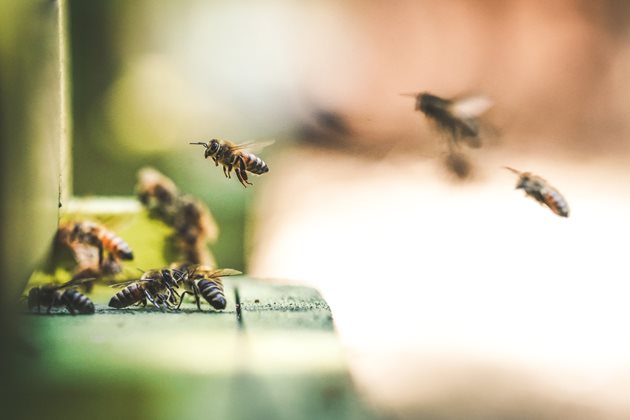Ondřej Veselý: Machine learning is a big thing
Waiting for the data
In 2014, you launched the FlowerChecker app which let users take photos of a plant that botanists would identify within 24 hours. Though the app still works, the photos its users have been sending have taught your Plant.id app to identify plants in real time using artificial intelligence. Can you tell us more about it?
Before FlowerChecker was developed, I was surprised to find out that there was no tool to identify plants based on machine learning while everything we read during our studies at university clearly indicated that – theoretically – the technology already existed to make it possible. I was so fascinated that I decided to create a thing like that. For machine learning you need data. But the data we needed was only available in academic databases that we were unable to access for commercial purposes. There was nothing left to do but create FlowerChecker to help us build our own database. Users kept sending us photos and professional botanists identified them. Along the way, we also found out that the desire to identify plants is so huge that people would pay us for it.
The idea to develop an app to identify plants was born when Ondřej Veselý and his roommate Ondřej Vild, a student of botany, were looking for a topic for their communal project. Later, IT expert Jiří Řihák joined them, and together they created FlowerChecker.
Several years later, after we collected enough data, the technology became advanced enough for us to start working on a new product. And thus Plant.id was born.
What were you doing during the time you were collecting the data?
I joined Kiwi.com which was a new company at the time with only around twenty employees. As a coder, I found out that it needed analysts, data experts and other professions, so I started to deal in hiring and built teams of these professionals as well. The beginnings of Kiwi.com were quite a wild ride which taught me a lot. Three years later, however, I started to feel burnt out and the corporate environment didn’t exactly help. Suddenly, it made much more sense to focus on FlowerChecker again than invest energy into a managerial position and company policy. I left in the spring of 2019, several months after the launch of Plant.id.
Plant.id identifies plants in real time, which makes it quite unique. Your aim is to monetize it. How is that going?
Slowly, but surely. Now, we have some clients from Sweden and the USA with a mobile app that makes use of our technology. They provide help for gardening enthusiasts, and one of their features is plant identification.
Husqvarna approached us once, wanting to install our technology in its mowers. Unfortunately, we weren’t ready and had no good terms and conditions prepared at the time. That’s why we’ve spent the last two months working hard, so that other huge clients don’t take us by surprise and we can establish proper cooperation.

But the identification process takes several seconds, right? How could a moving mower identify a plant and then not cut it?
Our API identifies a plant in about two seconds which isn’t quick enough, of course. Then there’s an option to install a special chip into the mower which can identify a plant in a fraction of a second. We haven’t started working on this yet, but we already know it is possible. A chip like that could be installed in other machines as well, such as other agricultural machines and drones.
Sounds great! How did you get into machine learning?
During my studies, I think. At university I enrolled in all the seminars somehow related to machine learning and AI. It’s a big thing which is going to get even bigger, so I wanted to be involved in it.
Which pollen is my honey made of?
Plant.id isn’t the only project you’ve been working on. There’s another one with the Czech Academy of Sciences, right?
I’ve cooperated with the Academy on three projects, in fact. But they are all semi-finished at this point. One of them is another app for identifying flowers, only designed for professionals. The app not only identifies them but also tells the users things such as how many pistils or petals they have.
Then there’s a project on the identification of plants from microscopic images of pollen grains. This will allow us to identify what plants a honey comes from, which is now rather difficult. These days, you need to take a sample of the honey, separate the grains, and only then can an expert look at the grains under the microscope to identify the plants. A process like this takes several hours. Our hypothesis is that even raw grains can be identified, i.e. a sensor could be placed at the entrance to the beehive to directly capture the grains that drop off the bees upon arrival. This way, we could have almost real-time images showing what the bees bring to the beehive during a day or an entire season. Such a device would cost no more than several thousand Czech crowns, which most beekeepers can afford.

Researchers at the Czech Academy of Sciences found out that the officially declared ingredients of honey are often inaccurate. For example, they analysed samples of forest honey and saw that most of the pollen comes from oilseed rape. And forest honey should of course come from a forest.
And the last project is a scanner placed in a forest to measure the volume and other parameters of trees. Of course, it would identify the trees as well. However, this has been only discussed. On one hand, we’d like to know what the technology could be used for, but we’re also looking to make business. If we succeed at both, we’ll start working on it.
We’d like to know about every single tree in a city
Speaking of trees, you now work on a project called LIFE Tree Check that is mapping trees in towns and cities. What exactly is your role there?
The project would like to improve the green infrastructure in towns and cities; its aim is to improve the way trees are planted and placed as well as increase their number. It’s supposed to help politicians make more competent decisions based on the real data they’d gain through LIFE Tree Check.
Another part of the project is to make the public aware of the role of trees in towns and cities. And that’s exactly what the app I’ve been developing focuses on; in the app, I combine elements of gamification with practical information about trees.

How is Tree Check App going to work then?
Of course, people will use it to identify trees and bushes based on their bark. At the same time, however, the app will learn from some external database how the given tree cools down the area around or how much oxygen it produces. If a user spots a tree which the database doesn’t contain, they’ll take a photo of it and it’ll be added to the database.
When do you plan to launch the app?
The plan is to launch it in the peak of spring, say in May, when people are most interested in nature, which we’ve already seen from the data we collected with FlowerChecker.
Reading documents to get refreshed
You work as an ethics expert in AI for the European Commission. What is that all about?
The European Commission distributes money to big companies and organizations for their research and development through various grant programs, such as Horizon 2020. I check the applications from consortiums of universities and private companies planning to do some development or research: it may be a robot working in a hospital carrying people from one bed to another or a system analysing camera footage in towns and cities which passes the information on to the police when something suspicious takes place.
They send me a huge document of, say, 100 pages, and I read it, looking for potential ethical risks. Sometimes we may feel that within the project some people are abused or their private data isn’t sufficiently protected, so we come up with some measures to make the consortium modify the project to improve it.
So it’s mainly about reading documents.
It is about reading documents and understanding the research plan in question. This is a very refreshing activity for me, as the documents deal with a wide range of disciplines.
It looks like you’re interested in environmental topics. Why is that? Is it only because of FlowerChecker or were you interested in them even before?
I can’t tell, really. In fact, I’m more interested in education, but if I was to make a list of my values, the environment would come right after it.
What do you like best about the environment of #brnoregion?
I used to enjoy brownfields and urban exploration, and I still like infrastructure in general, for example, I’m fond of walking along the railroad tracks. I like to walk in forests as well, though. I like hills. I like to get on my motor scooter and climb a hill where I can work or simply look around.
Read more about the topic
As Europe’s deep-tech landscape accelerates, Brno stands out as a city where science turns into startups. At this year’s Velvet Innovation Conference, which explores courage and resilience in innovation, emerging projects took the stage at the Startup Showcase. ACTOSens, Citymind, Lightly, EpiQ and Veriteus are those to watch. Curated by the innovation agency JIC, these startups combine academic excellence with global ambition, addressing challenges from healthcare and AI to cybersecurity and industrial automation.
In the summer of 2025, the city of Brno—an innovation hub—will host several prestigious international events focusing on technology, science, and research. These events offer a unique opportunity for professionals, students, and enthusiasts who want to keep pace with the latest technologies and establish valuable international connections.
